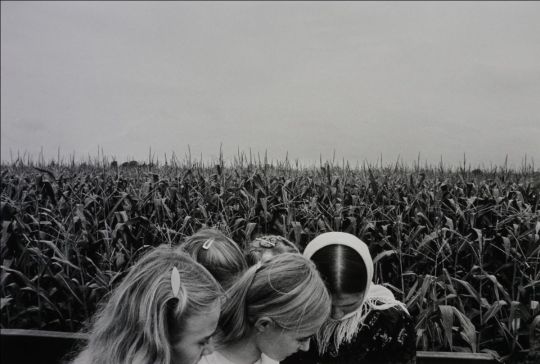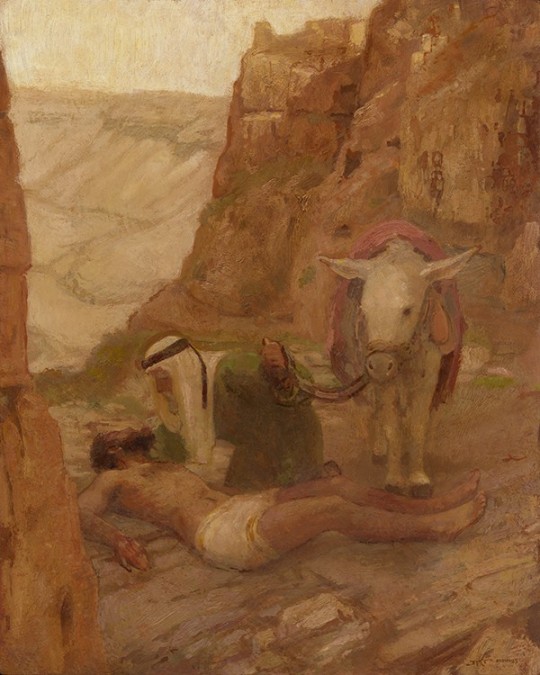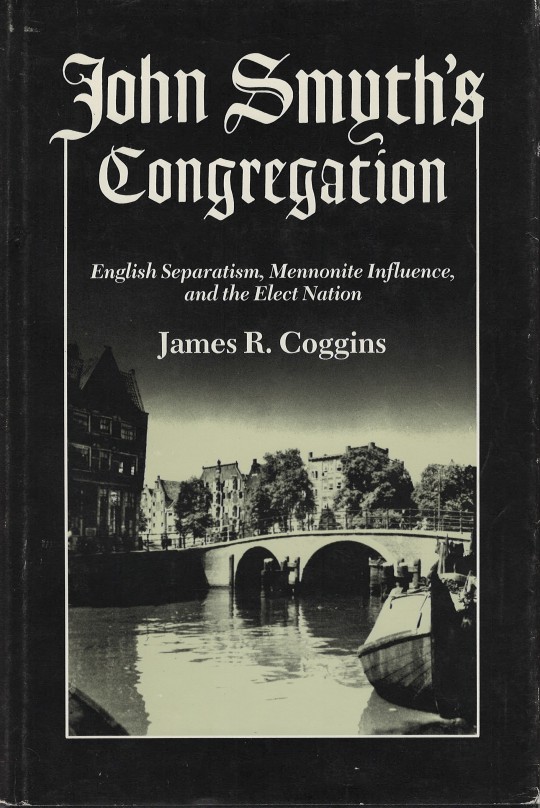#Mennonites
Explore tagged Tumblr posts
Text
An ongoing outbreak of measles in Ontario can be linked back to a “large gathering” last fall in New Brunswick’s Mennonite community, according to Ontario’s chief medical officer of health. In a letter to the province’s health units sent earlier this month, Dr. Kieran Moore said measles cases have been on the rise in southwestern Ontario and over 90 per cent of the cases have been among the unvaccinated. “Cases could spread in any unvaccinated community or population but are disproportionately affecting some Mennonite, Amish, and other Anabaptist communities due to a combination of under-immunization and exposure to measles in certain areas,” Moore wrote.
Continue reading
Tagging: @newsfromstolenland
#illness#sickness#measles#mennonites#outbreak#cdnpoli#canada#canadian politics#canadian news#canadian#ontario#new brunswick#nouveau brunswick
177 notes
·
View notes
Text

Lambton County, Ontario, Canada. 1990. From 'The Mennonites'
Photo: Larry Towell
49 notes
·
View notes
Text

Photographer Jake Michaels
97 notes
·
View notes
Text


Left: The Good Samaritan: He Had Compassion, by J. Kirk Richards, 2014. Right: Icon of Dirk Willems, by Jivko Donkov
[In] the parable of the Good Samaritan […] the people who fail to do good, who proved callous, were the priest and the Levite, who were more concerned with respecting their religious traditions than with coming to the aid of a suffering person. The one who demonstrates what it means to be a "neighbor" is instead a heretic, a Samaritan. He draws near, he feels compassion, he bends down and gently tends the wounds of his brother. He is concerned for him, regardless of his past and his failings, and he puts himself wholly at his service. Jesus can thus conclude that the right question is not: "Who is my neighbor?" But: "Do I act like a neighbor?" Only a love that becomes gratuitous service, only a love that Jesus taught and embodied, will bring separated Christians closer to one another. Only that love, which does not appeal to the past in order to remain aloof or to point a finger, only a love which in God's Name puts our brothers and sisters before the ironclad defense of our own religious structures; only that love will unite us.
Pope Francis, Homily on the Solemnity of the Conversion of Saint Paul, given January 25th, 2024.
(Today, May 16th, marks the 455th anniversary of the death of Dirk Willems, Anabaptist martyr who nearly escaped execution at the hands of officials of the Catholic Church, but who stopped to save the life of one of his pursuers even though it meant he would certainly be recaptured)
#Christianity#Catholicism#Mennonites#martyrs#saints#Dirk Willems#My Pope#Parable of the Good Samaritan#compassion#love#charity#agape#ecumenicism#J. Kirk Richards
14 notes
·
View notes
Photo




All My Puny Sorrows (Michael McGowan, 2021)
#family#Canada#library#civilization#drama film#Alison Pill#Michael McGowan#Sarah Gadon#Donal Logue#Mimi Kuzyk#Amybeth McNulty#sisters#emotions#awareness#empathy#Mare Winningham#mental health#Miriam Toews#sisterhood#Canadian society#Mennonites#indie film#Toronto#Ontario#All My Puny Sorrows#Winnipeg#Manitoba#love#trust#life
4 notes
·
View notes
Text
I can't find the post where I said Mennonites were a cult like the Amish, but I remember someone replied with, "Hey, that's not correct" but with a bit more explanation.
Anyway, I can't find the original post to reblog and correct myself, so I just wanna say somewhere that I was wrong about Mennonites shunning and threatening shunning to anyone who is going to leave. It does happen, but it's not absolutely universal the way it is with the Amish, the Mormons, or with the Fundamentalist Christians.
When speaking of cults vs. religions, I think it's very important to double check these things because understanding if someone is going through a cult experience vs. a shitty church experience can be very, very different.
Like, the Catholic church on paper (and on twitter) is just a pile of shitbags. But there's also a lot of Catholics who loudly speak out about fucked up church doctrine and other fucked up church practices. That's not a cult. That's a bad church experience. You get me?
Looking at the wiki article, which is wonderfully detailed, I see the reason I thought all Mennonites practiced excommunication is because I grew up near Old Order Mennonites, who DO practice excommunication. But they are just one of many variations on the practices. Lots of schisms went down over time.
So, I was wrong. Old Order Mennonites? They use excommunication and shunning. Those are cult behaviors. But many Mennonites do NOT do that. It's an important distinction.
#mennonites#religion#cults#things i learned#to whoever replied to that post from months ago#sorry it took so long to read up#but thanks for letting me know i should
17 notes
·
View notes
Text

Mennonite participants in the “All God’s Children March for a Ceasefire" march cross the Potomac River, Sunday, July 28, 2024, entering Washington, D.C., from Virginia. (RNS photo/Aleja Hertzler-McCain)
#religion#protest#christianity#protestantism#mennonites#people#ceasefire#washington dc#united states#divinum-pacis
4 notes
·
View notes
Text
Who Is John Smyth (and why does it matter)? by James R. Coggins
Most Baptists know very little about history—and care even less. In particular, most Baptist know very little about their own history. They are part of a significant denomination that has spread through many countries around the world, and they have no idea how the whole thing got started. Some just assume their denomination goes back to John the Baptist, the forerunner of Jesus. The truth is…

View On WordPress
#Baptist Church#Baptists#Church of England#history#John Smyth#King James I#Mayflower#Mennonites#Puritans#religiouis toleration#separation of church and state#Thomas Helwys
2 notes
·
View notes
Text

It's my parents' wedding anniversary today, and this cracks me up every year. Hard-hitting news for the small-town newspaper!
13 notes
·
View notes
Text
Submission Form
I think most of y'all kinda know the drill here. Submit as many denominations as you want (INDIVIDUALLY), but don't spam the form.
This poll is for PROTESTANT denominations and sub-denominations. Do not submit catholicism, JWs, or Mormons. This poll can also include "non-denominational" organizations so long as they have multiple churches and a distinct interpretation of faith. For example, the IBLP and the New Independent Fundamentalist Baptists can be submitted.
You can also submit denominations just because they suck and you want to see them beaten into the ground.
Here's the link. I'll be taking Top 32 make it into the bracket. The submission form will remain open until I feel that response is sufficient (so probably like 2000 responses).
#protestant#baptist#mennonites#amish#christian#christianity#christian denominations#bracket polls#pentacostal#anabaptist#evangelical#charismatic#lutheran#united methodist church#methodist#episcopal#seventh day adventist#quaker#religion#presbyterian#holiness church#jesus christ#jesus#kjvbible#christian discourse#ruleposting#196#r196#r/196#rule
4 notes
·
View notes
Text
God bless those who have come to help. Eternal shame on the US government for delaying meaningful assistance until now.

413 notes
·
View notes
Text
How Then Can We Be Silent - Speaking Out Against Injustice
A Sermon on Esther (Note: Sermons can be heard in audio format at https://millersburgmennonite.org/worship/sermon-audio/) Scripture: Esther 4:1-17 (NIV) Introduction In 2000, leaders of the Colombian Mennonite Church wrote to the Mennonite Church in Canada and the U.S. The letter entitled “An Urgent Call from Colombia to the Churches in the North for Reflection and Action for Life” began as…

View On WordPress
#Advent#advocacy#Columbia#Esther#God#Injustice#Justice#Mennonites#Peace and Justice#Religion and Spirituality#Sermons#Shalom#Speaking Out
1 note
·
View note
Text
this was me!!! I was involved with this group (Mennonite Action) that day!!! I have many friends in this video <3 (I was just outside of he building holding signs with another hundred or so of us)
Mennonites singing the hymn "Canticle of the Turning" in 4 part harmony while occupying a government building and demanding a ceasefire in Palestine. 135 were arrested.
855 notes
·
View notes